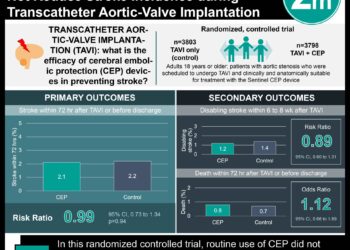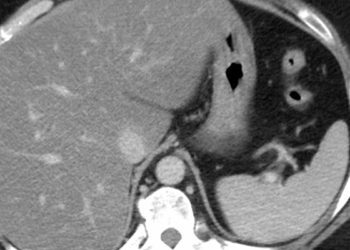Comparison of laparoscopic percutaneous extraperitoneal closure and laparoscopic intracorporeal suture in pediatric hernia repair
1. Among children requiring inguinal hernia repair, those receiving laparoscopic percutaneous extraperitoneal closure had a faster time to recovery, experienced fewer complications, and had enhanced cosmetic results.
Evidence Level Rating: 2 (Good)
Surgical repair of inguinal hernias among children is very common, and high-quality evidence suggests that laparoscopic minimally invasive surgery (MIS) is superior to open surgery. This retrospective study compared two types of MIS inguinal hernia repair – intracorporeal and extracorporeal – to determine which is superior. 474 patients were included, 214 of whom underwent laparoscopic intracorporeal suture (LIS) (mean [SD] age = 53.0 [31.3] months) and 260 laparoscopic percutaneous extraperitoneal closure (LPEC) (mean [SD] age = 54.9 [36.6] months). Compared with the LIS group, average surgery time in the LPEC group was significantly lower for both unilateral (15.76±5.35 min vs. 19±5.71 min, p = 0.04) and bilateral (21.56±5.7 min vs. 26.38±6.94 min, p = 0.01) repairs. Both groups had the same number of patients who required analgesics after surgery. However, the LPEC group required less time to fully recover than the LIS group (3.92±0.832 days vs. 4.27±0.895 days, p = 0.017). Furthermore, there were more surgical site infections in the LIS group as well as more recurrent hernias, but neither of these differences reached statistical significance. With regards to scar visibility, the mean scar rating using a five-point scale was higher in the LPEC group compared with the LIS group (4.61±0.095 vs. 4.07±0.26, p = 0.02), indicating that the post-operative scar was less visible. Additionally, mean rating for cosmetic satisfaction was numerically, but not significantly, higher in the LPEC group. In all, this study demonstrated the efficacy of laparoscopic hernia repair using an extracorporeal approach with reduced operative time, more rapid recovery, and improved cosmetic results.
Click to read the study in the Journal of Pediatric Surgery
Image: PD
©2020 2 Minute Medicine, Inc. All rights reserved. No works may be reproduced without expressed written consent from 2 Minute Medicine, Inc. Inquire about licensing here. No article should be construed as medical advice and is not intended as such by the authors or by 2 Minute Medicine, Inc.







